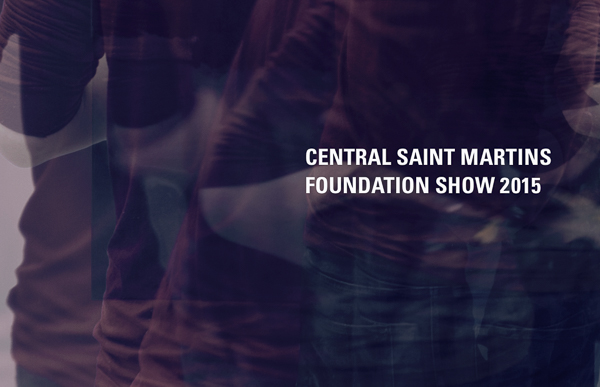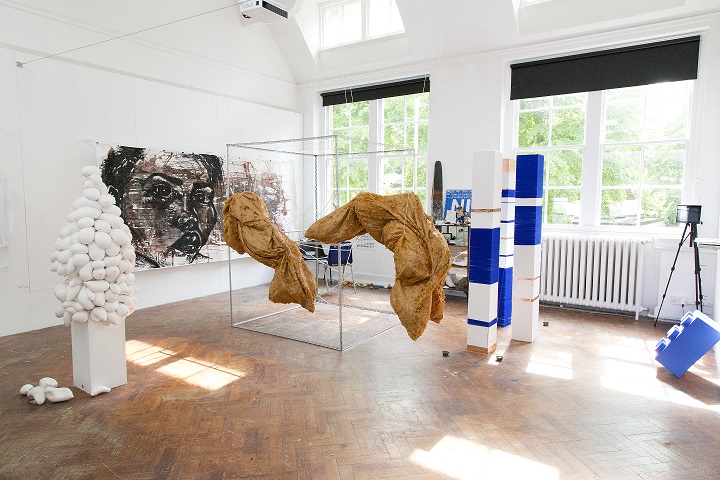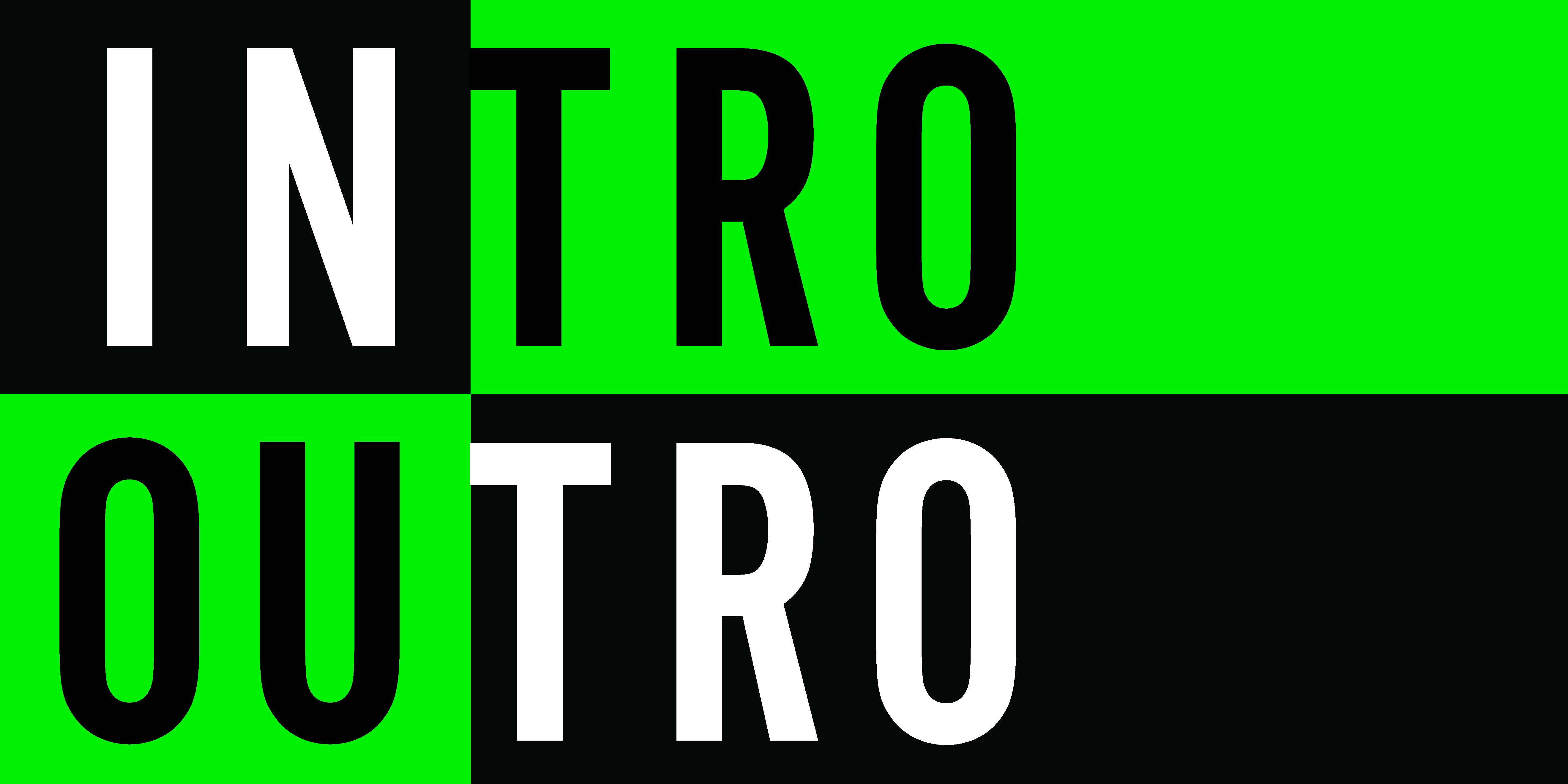2015年04月24日
【卒展情報】ロンドン芸術大学各カレッジのファウンデーションコース
ロンドン芸術大学のセントマーチンズ(Central Saint Martins)、CCW(Camberwell, Chelsea & Wimbledon)、LCC(London College of Communication)のファウンデーションコースのFinal Showの情報です。
★Foundation Show 2015 - Central Saint Martins★

14 May - 16 May 2015
Opening times: Thursday to Friday: 12 noon – 8pm
Saturday: 12 noon – 6pm
Location: Central Saint Martins
Granary Building, 1 Granary Square, King's Cross
詳細⇒ http://events.arts.ac.uk/event/2015/5/14/Foundation-Show-2015-Central-Saint-Martins/
★Camberwell, Chelsea & Wimbledon Foundation Diploma in Art & Design Summer Show★

11 May - 15 May 2015
Private View: Monday 11 May, 6pm - 9pm
Open to the general public:
Monday 11 May 11am - 5pm
Tuesday 12 May 10am - 8pm
Wednesday 13 May 10am - 8pm
Thursday 14 May 10am - 8pm
Friday 15 May 10am - 5pm
Location: CCW Progression Centre
Wilson Road, London SE5 8LU
★LCC: Intro/Outro: Foundation Diploma Art & Design 2015★

27 Apr - 06 May 2015
10:00 to 17:00
Private View: Tuesday 28 April, 6 - 9pm
Exhibition open: Monday 27 April - Wednesday 6 May
Monday - Friday 10am - 5pm
Saturday 11am - 4pm, closed Sunday
Location: London College of Communication
Elephant & Castle London SE1 6SB
詳細⇒ http://events.arts.ac.uk/event/2015/4/27/Intro-Outro-Foundation-Diploma-Art-Design-2015/&book=true
投稿者 unicon : 11:35
2015年04月15日
セントマーチンズのマジックコース“Orientation to Art and Design”の授業料が値上がりします
過去20年間のロンドン芸大ファウンデーション・コースへの合格率はほぼ100%。
セントマのファウンデーションに限っても99%以上の実績を持つマジックコース。
それがセントマーチンズのOrientation to Art and Design (通称:オリエン)。
ロンドン芸大にしては珍しくここ3-4年授業料がほとんど変わらなかったオリエンテーションコースも2015年10月のコースよりついに値上がりします。
旧授業料: 3975ポンド ⇒ 新授業料: 4495ポンド
2015年6月22日スタートのオリエンは3975ポンドです。
6月22日からのオリエンは現在も申込みを受け付けていますので、受講ご希望の方はユニバーシティ・コンサルタンツ東京事務所までご連絡ください。
〜〜〜〜〜〜〜お問い合わせはここへ 〜〜〜〜〜〜〜
ユニバーシティ・コンサルタンツ東京事務所
住所:〒150-0045 東京都渋谷区神泉町1-11
電話 : 03-5728-6330
メール : mail@unicon-tokyo.com
☆**‥…★…‥**☆◆☆**‥…★…‥**☆◆☆**‥…★…‥**☆◆☆**‥…★…‥**☆
オリエンテーションコースの体験記
【コース体験記】武内さやさん(19歳)雨にもIELTSにも負けず 平成女子高生のロンドン奮闘記】
http://www.unicon-tokyo.com/courses/archives/2012/12/19ielts_1.html
【この人に聞きました:メディア掲載】File17. 田崎志佳さんがメディアで紹介されました!http://www.unicon-tokyo.com/interview/archives/2014/06/file17.html
【オリエンテーション@セントマ 塩川さん】
http://www.unicon-tokyo.com/courses/archives/2013/01/post_2.html
【この人に聞きました】“やる気と勇気とお金がキーワード 100万円で人生を変えた人たち” 雑誌「Lips」掲載記事 塩川彩さん
http://www.unicon-tokyo.com/interview/archives/2013/10/file14.html
【Artscom @CSM オリエンテーション 西久保まりさん】
http://www.unicon-tokyo.com/courses/archives/2009/06/artscomcsm.html
☆**‥…★…‥**☆◆☆**‥…★…‥**☆◆☆**‥…★…‥**☆◆☆**‥…★…‥**☆
投稿者 unicon : 10:24
2015年04月10日
The dA-Zed guide to Alexander McQueen
Runway cyborgs, bum-baring jeans and golden showers: in honour of Savage Beauty’s upcoming opening, we break down the legend in 26 letters
Savage Beauty has finally come home to the city that birthed the man. Opening at the V&A five years after the fashion iconoclast’s death, the Alexander McQueen retrospective promises a groundbreakingly inclusive tribute to the designer and his vision. Whittling down the world of fashion’s most controversial, far-reaching and future-facing designer into a 26-point love letter feels, inevitably, too small; even in his quietest moments, McQueen’s romantic offensive against fashion’s prevailing mood for minimalism was unfailing. So here, to mark the exhibition’s opening, is just one narrative among so many: our critical guide to the clothes, the shows, the collaborators, and, connecting everything, the fantastical playground of inspirations that one can just about make out in the dark.
A IS FOR THE ASYLUM
McQueen at his theatrical best. His SS01 tableau saw models trapped inside a glass cube, with the audience outside looking in – but the models couldn’t see out. A psychiatric ward in the guise of a fashion presentation, the inmates wore hospital headbands with their feathered creations. The finale revealed another cube within the ward, within which lay McQueen’s stark pièce de résistance: a Rubenesque figure, reclining nude, her face concealed by an iron mask with tubes and her body surrounded by fluttering moths.
B IS FOR BUMSTER
We can probably lay the blame for the low-slung jeans of the early 2000s at the feet (or rather the waistline) of the McQueen bumster. First seen in trouser form in the designer’s first collection, it was reincarnated in later years – as a black silk taffeta skirt in AW95’s Highland Rape collection, for example. As McQueen told the Guardian in 1996, it wasn’t about builder’s behinds: “I wanted to elongate the body...The bottom of the spine – that’s the most erotic part of anyone’s body, man or woman.”
C IS FOR CYBORGS
As the millennium approached, designers turned to technology to see what the fashion future held – and McQueen, by then at Givenchy’s helm, was no exception. For AW99’s Haute Couture collection, McQueen’s LED light-up creations were a cyberpunk future shock for couture’s elite.
D IS FOR DAVID BOWIE
“Are you gay and do you take drugs?” That’s how David Bowie’s frank interview with Alexander McQueen begins in issue 26 of Dazed. McQueen designed the costumes for the Thin White Duke’s tours in 1996-1997, as well as the iconic Union Jack coat he wore on the cover of the Earthling album.
E IS FOR 'ECLECT DISSECT' COLLECTION
Marking McQueen’s second collection for Givenchy, AW97 was created in close collaboration with set designer Simon Costin – a pairing that worked to redefine the fashion show format time and time again. Located in a Paris medical school, McQueen’s vengeful ghosts wore resin animal skulls as shoulderpads and taxidermy as headdresses in a procession that married East and West in unprecedented combinations. As McQueen told Numero in 2002, “My idea was this mad scientist who cut all these women up and mixed them all back together.”
F IS FOR FASHION-ABLE
McQueen’s designs were always a riposte to normative beauty, but it was in a guest-edited issue of Dazed in September 1998 that he confronted convention most profoundly. His Fashion-able cover story, in collaboration with Nick Knight and Katy England, featured models with varying physical disabilities and specially commissioned designs from Rei Kawakubo, Hussein Chalayan and Philip Treacy. But how would critics react to fashion articulating a subject often left to silence? As Susannah Frankel said of the shoot, “The brilliant thing about the designer – one of the many, many brilliant things about the designer – was that he didn’t care one iota about what anyone else would think.”
G IS FOR THE GOLDEN SHOWER
McQueen’s SS98 show The Golden Shower – or Untitled as it was known to its outraged corporate sponsors – was a memorable feat of two distinct halves. In the first, sharp tailoring grew steadily sheerer to reveal the skin underneath. In the second, the yellow-lit rain fell, soaking models’ all-white outfits as the liquid underneath the runway steadily grew to an inky black.
H IS FOR HIGHLAND RAPE
Inspired by the “ethnic cleansing” of the British Forces in the Scottish Highlands in the 18th and 19th centuries, McQueen’s fourth collection revealed his strong ancestral pride as well as his strong statements on femininity that would continue to be misconstrued by critics throughout his career. Models were battered and bloodied, and clothes fell off their frames – but, for those who were paying attention to the clothes, the precise tailoring and early appearance of the Bumster made a strong statement of his burgeoning house codes.
I IS FOR ISABELLA BLOW
An enduring collaboration that set the standard for muse/artist relationships, Isabella Blow is credited for discovering McQueen and accompanying him every step of the way into the heart of the fashion establishment. She bought his entire graduate collection for £5000, paying it in £100 instalments. Blow is even to thank for his very moniker – she reportedly persuaded him to go by his middle name, rather than ‘Lee.’
J IS FOR JACK THE RIPPER (STALKS HIS VICTIMS)
This was title of McQueen’s 1992 graduate collection from the Central St Martins MA course, overseen by the late Louise Wilson. It introduced style tenets that would shadow his entire ouevre – historical narratives, and a constant dance with death and decay. The latter obsession was reified in one frock coat, which contained just-visible human hair between the fabric and the lining (his own, by all accounts).
K IS FOR KATY ENGLAND
Katy England was McQueen’s closest collaborator for more than a decade. They met in 1994, when McQueen approached her in a bead shop: asking, according to a later Guardian interview with the stylist, “Are you Katy England? Do you want to go for a cup of tea?” The designer’s right hand woman since SS95’s The Birds show and right through the Givenchy years, her role in those early making-it-up-as-they-went-along days established one of fashion’s most fruitful creative affiliations.
L IS FOR LONDON
Unlike the Met’s 2011 exhibition, the V&A’s take features a new gallery: curated by England, it showcases 10 designs from McQueen’s early years in London. His East-End origins, complete with a cabbie for a father, contributed to the media myth-making around the “hooligan” of haute couture. It was label that McQueen part-despised, and part played up to – but for those who looked beyond the hype, London was as much an integral part of McQueen’s design DNA as it was his public persona.
M IS FOR "MARKS AND SPENCER"
Historians of McQueen’s fabled fashion history needn’t panic – you haven’t missed a one-time high-low collaboration with the British high street establishment. In conversation with David Bowie in Dazed & Confused, McQueen is asked if he prefers “Armani and Versace” His response? “Marks and Spencer” – three little words that, as ever, proved McQueen’s talent for sound bites as well as his commitment to fighting corporate ennui in fashion (no matter whom he might offend in the process).
N IS FOR NATIONHOOD
In an era where fashion’s homogeneity declared local colour to be distinctly beyond the pale, McQueen emerged as a designer who was fiercely proud of his heritage. He was also able to make that heritage feel new again. Inspired by his family roots that traced back to the time of the last Jacobite rising, his historical viewfinder highlighted events of our cultural legacy that most would rather be left unturned. Highland Rape’s reference to Britain’s atrocities in Scotland is an early example, but the vision was developed to emotional and technical completion in Widows of Culloden: the show, for AW06, that conjured images of tartan-clad Scottish heroines with fierce warriors for ancestors.
O IS FOR OUT OF THIS WORLD
With his artistic vision by then irrevocably tied to commercial backing – its rewards, and its discontents – McQueen proved his ability to break into unprecedented, even extra-terrestrial territory for his final, finished collection. Dubbed Plato’s Atlantis, SS10 was the first show to be live streamed online, in collaboration with SHOWstudio. It spoke of something other than human: the collection’s digitally printed dystopia felt wholly alien even while it proved a biological match for the fashion world’s fauna.
P IS FOR PEPPER'S GHOST
Widely held – for those lucky few in attendance – to be McQueen’s most astounding runway moment, the finale of AW06 revealed a dancing Kate Moss who was both there and not there. The state-of-the-art hologram, which flickered into being for a few seconds before disappearing, was created by Baillie Walsh using the optical technique known as Pepper’s Ghost – so-called for being first put into practice by the alchemist John Henry Pepper in the mid-19th century.
Q IS FOR QUEERING HOUSE CODES
In 1996, Givenchy was safe: its tenets were elegance, understatement and refinement. That is until a new maestro was appointed who was determined to provoke. He would hold the role until 2001, in which time house signatures would be subverted and show formats transformed into performance art: his haute couture show for AW99, for example, replaced models with futuristic plastic mannequins, made to seem alive by springing from the ground, rotating and returning to the darkness.
R IS FOR ROBOTICS
In a SS99 collection inspired, in essence, by the Arts and Crafts movement, the finale cemented McQueen’s reputation as equal amounts performance artist and designer. Inspired by a Rebecca Horn installation of two shotguns firing blood-red paint at each other, the audience bore witness to a technological attack on model Shalom Harlow: two industrial, robotic arms spray-painting her rotating frame with increasing aggression, a symbolic act that spoke of the act of creation itself.
S IS FOR SARAH BURTON
Manchester-born, London-made designer Sarah Burton first interned at McQueen in 1996; after her mentor and friend’s death, she took on what many saw as the insurmountable task of continuing his legacy. But continue it she has, with the kind of deep understanding of the McQueen DNA that has given her authority to take it forward: the dark romanticism remains, but filtered through a new lightness.
T IS FOR TAILORING
Before Central Saint Martins, McQueen pursued a four-year stint at Savile Row, establishing the designer’s confidence in cut and precision that would come to define his output from his degree collection to his last. A popular narrative of his training at the coat-tails of the upper classes in his early years prevails, though to ask McQueen himself, the signature sharpness was innate. As he once said, “I think to know about colour, proportion, shape, cut, balance, is part of a gene.”
U IS FOR THE UNDEAD
From the very beginning, McQueen’s women-muses have been vengeful ghosts and unearthed corpses. A taste for the macabre infused throughout his collections, whether articulated out of 19th century history books or darkness closer to home. In AW98’s It’s a Jungle Out There show, overt animal references were an opportunity to muse on the ephemerality of human life, too – one jacket depicts Jesus on the cross. But the McQueen undead always reeked more of vengeance than they did an early grave – for AW01, one model nimbly dragged a golden skeleton with her heel.
V IS FOR VICTORIANA
Throughout his own reign at the helm of a great British fashion empire, McQueen’s creations continually returned to the aesthetic tropes of an antecedent century: Victorian and Edwardian themes pepper his oeuvre, from his first Jack the Ripper-inspired collection to the crinolined creatures of his critically acclaimed AW08 offering, a collection that told a story of colonial romance in India.
W IS FOR WOODLAND CREATURES
McQueen’s affinity with the natural world led to the continued appearance of animal – and animalistic – tropes in his (ostensibly) human-populated world. AW97’s It’s a Jungle Out There brought us his signature gazelle’s horns, twisting from heads and from the shoulders of jackets. Later, SS09’s Origin of the Species-inflected collection played on the signatures of all members of the animal kingdom – and even featured taxidermied creatures as its backdrop, with McQueen appearing dressed in a rabbit outfit for the finale.
X IS FOR XENOPHILIA
McQueen’s fierce Brit boy persona was always offset by his xenophilic tendencies: he mingled Spanish matadors, Indian weddings and Eastern promise, often within a single show and sometimes, remarkably, within a single, agenda-setting garment. Asia provided a fruitful inspiration at many points, with the McQueen kimono becoming a signature of the designer’s oeuvre – even, as demonstrated in SS15’s celebration of Japonism, as extended to Sarah Burton’s tenure today.
Y IS FOR YOUTH CULTURE
“I draw inspiration from the streets of the city, from the kids in Hoxton, to the punks in Camden, to a chic lady walking down Bond Street.” So said McQueen, speaking to Dazed ahead of launching his youth-culture focussed diffusion line in 2006. Taking the mainline’s signature tailored tweeds and diffusing it through the denim and leather uniforms of London’s teenagers, the collection proved McQueen’s apprehension of the styles on the ground – even while his main collection reached new conceptual heights.
Z IS FOR ZEITGEIST
Putting the public narratives around the man himself aside, there’s another reason why McQueen has become part of a nation’s cultural consciousness: his talent for launching a trend, with all the thousands of imitations that such a knack would connote. A potted history of trends that peppered the 1990s and 2000s, however regrettable they may be now, read like a inventory of McQueen originals: low-slung jeans (those bumsters), pirate boots (SS03), digitally engineered prints (SS09), and, of course, SS10’s Armadillo heels, which surely spawned the noughties’ obsession with impossible heights in footwear.
記事はこちら⇒ DAZED
投稿者 unicon : 15:41